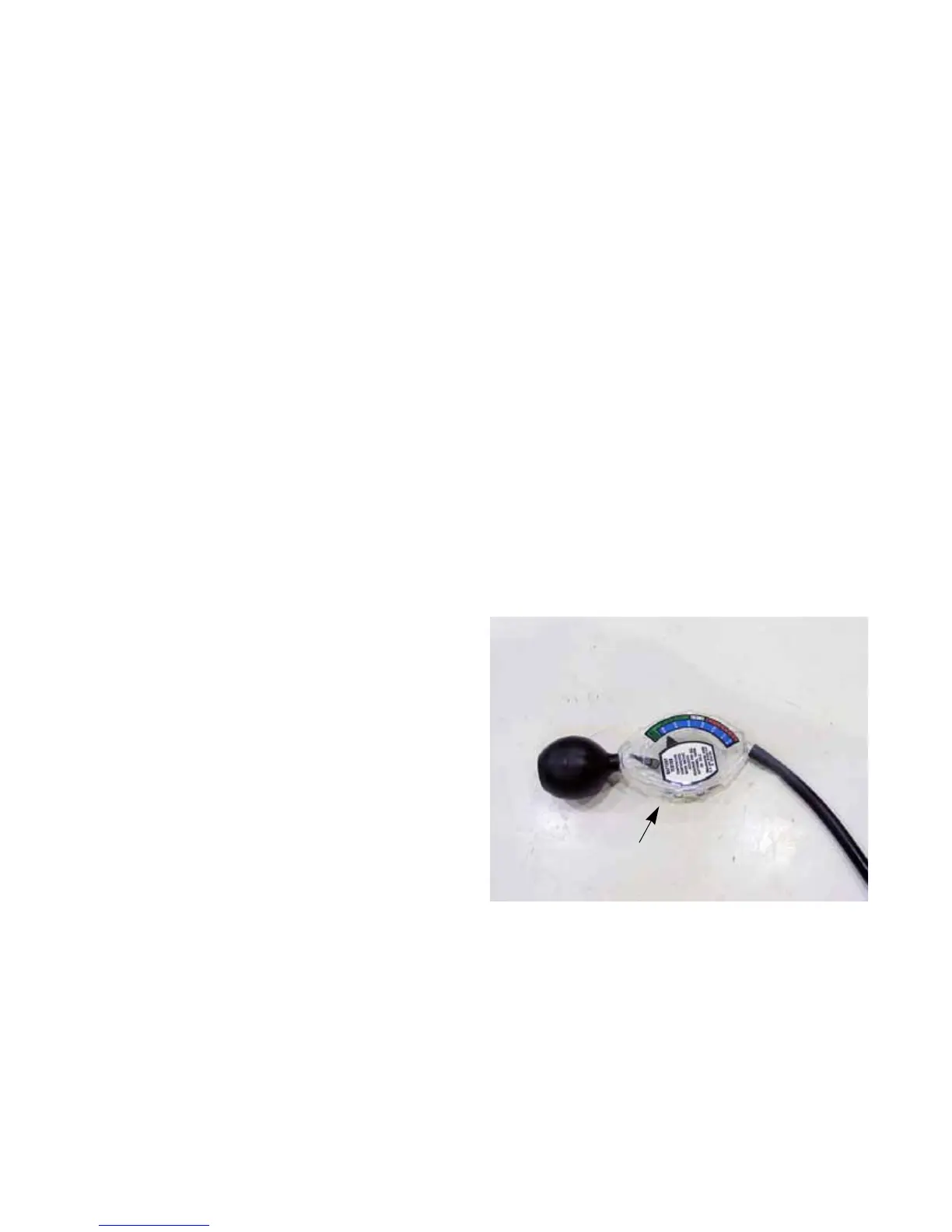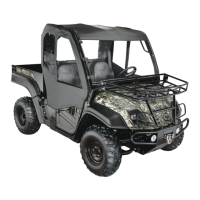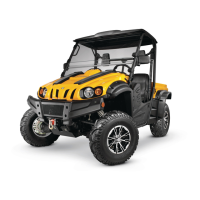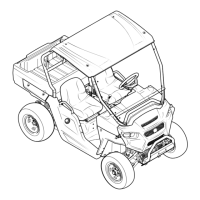Chapter 9 - Electrical
304
• Some charging systems do not work if the sys-
tem voltage falls below 6V. It takes a certain
amount of voltage to excite the fields in the alter-
nator.
• Some solid-state components will not work if the
system voltage falls below a given threshold.
• Some solid-state components can be damaged
by the jump-starting that accompanies operation
with a dead battery.
• Many electric PTO clutches will fail to work
dependably if battery needs to be replaced.
Even though the charging system produces
enough out-put to drive the clutch, it is over-
taxed driving the clutch and forcing a charge into
a damaged battery.
• Continued operation with a weak battery over-
taxes the charging system.
3. Charging the battery:
NOTE: It is best to remove batteries from equip-
ment for charging to minimize corrosion from
out-gassing during charging.
CAUTION: When disconnecting or removing the
battery, disconnect the ground cable first. When
reconnecting or installing a battery, connect the
ground cable last. These steps will minimize the
chance of shorting-out the battery posts with a
tool.
3a. Batteries on most modern outdoor power
equipment are 12 volts so set the charger
to 12 volts.
3b. Set the charge rate to 2 amps.
CAUTION: Never charge an outdoor power
equipment battery at a rate higher than 2 amps.
Damage to the battery will result.
CAUTION: Never attempt to charge or jump a
frozen battery.
3c. Charge the battery until it is fully charged.
Most battery chargers have an amp
gauge to show the charging rate. When
the gauge is at zero, stop charging the
battery.
4. Checking battery condition: There are three
things to do when testing a battery:
• Visual inspection
• Electrolyte test
• Operational test
4a. Visual inspection
• Inspect the battery and battery connections for
corrosion. Clean if necessary. Neutralize acid
with baking soda, and protect the terminals once
they are cleaned.
NOTE: Battery cable corrosion is the most com-
mon type of increased resistance circuit failures.
• Inspect the battery case for signs of damage and
missing vent caps. Battery cases that bow out in
the middle indicate that the battery froze and
should be replaced.
5. Check the electrolyte level if the caps can be
removed. Fill as needed with distilled water.
After initial charging, do not add electrolyte to
the battery.
6. Hydrometer test (non-sealed batteries only)
See Figure 9.63.
CAUTION: Always wear eye protection and acid
resistant gloves when working with electrolyte.
Use baking soda to neutralize any spilled acid.
6a. Give the battery at least ten minutes for
the electrolyte to stabilize after charging
the battery or adding water to the cells.
6b. Measure the temperature of the electrolyte
in the middle cells of the battery.
Figure 9.63
Hydrometer

